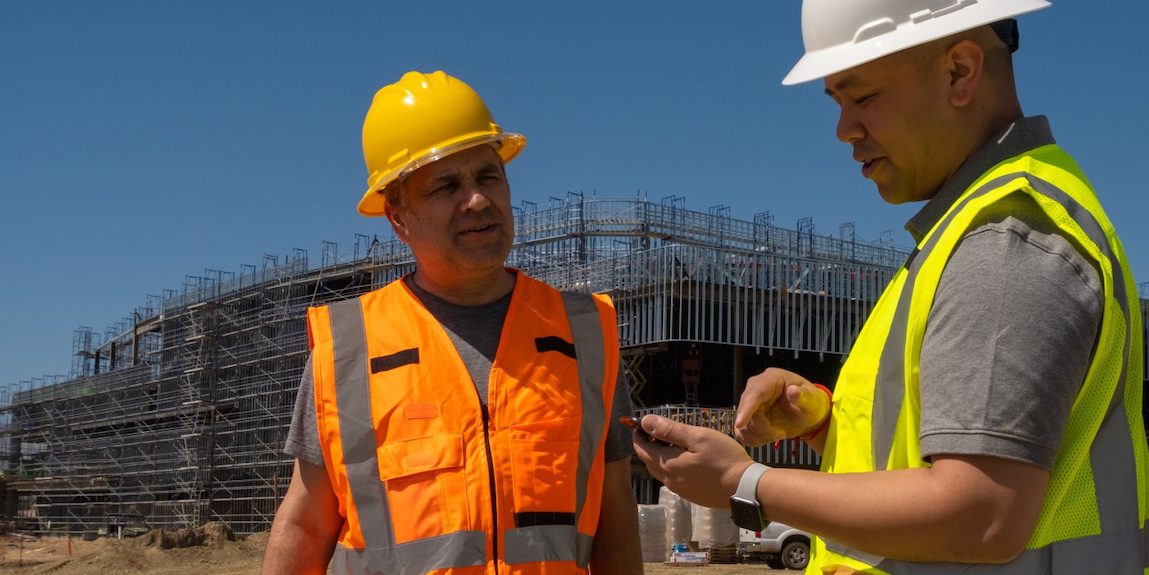

In today’s high-tech society, privacy and location tracking are hot topics. With the introduction of telematics technology, some have asked whether these systems know our exact locations.
Telematics has become an invaluable tool across several industries, namely the construction and equipment rental sector. It has radically changed how fleet managers collect data on vehicle diagnostics, route tracking, and equipment performance.
While some may seem uneasy about the power of this technology, they can be set at ease when the safety and efficiency benefits are considered. Telematics is a powerful tool, and when used correctly, helps construction companies operate more efficiently.
This article will delve into the different capabilities of telematics systems and how they are used for location tracking. We’ll also take a look at potential privacy concerns and how businesses can take precautions to ensure the safety of their fleet and drivers.
Telematics integrates GPS technology to track the real-time location of vehicles and fleets. Through a built-in receiver, vehicles and equipment can be tracked for their precise location and usage. From here, data is sent to a cloud-based server or platform like Trackunit, where it is then accessible to fleet managers, business owners and the like.
Telematics technology incorporates various tools for better fleet management. It is incredibly useful for location tracking, streamlining data across business systems, and running vehicle diagnostics. However, we cannot ignore the importance of privacy.
Companies using telematics should ensure they invest in a telematics software system that upholds the safety and privacy of their workers and customers.
As mentioned before, telematics relies on GPS technology. Through a network of satellites, GPS sends and receives signals to determine the precise location of a receiver, including smart devices, tracking devices, on- and off-road vehicles, and more.
For fleets that use telematics, typically, a GPS receiver is either attached or built directly into a vehicle or piece of equipment. Once location data is gathered, fleet managers, administrators, and sometimes OEMs can access and analyze this information from a central server or cloud-based platform.
Telematics location tracking provides both individuals and businesses with numerous advantages.
It primarily offers real-time visibility into the locations of vehicles, enabling fleet managers to keep an eye on their fleet’s activities and make wise choices. Businesses can reduce idle time, and enhance overall operational efficiency with precise and up-to-date location information.
Location-based services assist in lowering fuel, maintenance, and insurance premium costs. Construction companies can find opportunities to optimize fuel efficiency and put preventive maintenance procedures in place to increase the lifespan of their assets.
The maintenance of equipment is crucial in the construction sector. Proper maintenance lowers the likelihood of malfunctions, expensive repairs, and project delays.
Construction companies can maximize uptime, extend the life of their equipment, and improve operational efficiency by following scheduled maintenance schedules. With telematics location tracking software like Trackunit, you can monitor the status of your equipment.
Construction companies can spot indications of equipment malfunctions or unusual operating conditions by looking at the data and distance moved over a specific period of time. They can set up alerts and notifications to proactively address problems and plan maintenance tasks.
Condition monitoring lowers the likelihood of equipment failure and expensive repairs by assisting in the early detection and resolution of issues.
Geofencing is one of the main advantages of location tracking. With geofencing, construction companies can create digital limits or zones around the job site or company site.
Alerts can then be set off to notify managers or safety personnel whenever a vehicle or piece of equipment enters or exits one of these designated areas. This helps monitor usage, preventing unapproved entry to the company or the construction site. Ensuring only authorized people have access to equipment lowers the risk of theft or tampering.
Location tracking can also be used to help locate any equipment that was stolen before the right authorities showed up. Businesses can quickly recover their equipment and save money by not having to buy replacements.
Every GPS tracker and OEM has distinctive features to differentiate devices.
These devices, when secured to the equipment, enable rental companies to track the time and location of the equipment’s departure. By counting the number of pieces already in use, our devices enable businesses to determine which types of equipment are typically in the highest demand as well as the state of each item’s maintenance.
These small devices can log data about the location, usage, and status of a vehicle or piece of equipment. With the same geofencing and other features, they may collect location data, which significantly improves safety. Telematics devices provide this information by gathering and examining this extensive information that can then be used to enhance fleet operations, lower costs, and improve safety.
There are many benefits of location tracking and privacy is paramount when it comes to data collection and storage. For telematics software companies, security should be at the forefront of innovation, ensuring that all user and data information is safely stored in encrypted storage.
Here are a few things to look for when choosing a telematics software system:
To protect employee and customer privacy, companies using telematics systems should prioritize data security and encryption where possible. Exact location data should only be accessible to authorized workers and this data should have strict access controls.
Location tracking is a key part of the function of telematics as it allows businesses to gather useful data and information. With the use of GPS technology, telematics software like Trackunit empowers fleet managers and rental companies to manage, maintain, and protect their assets efficiently and effectively.
By prioritizing data protection, businesses can establish customer and employee trust and also do right by their fleet.
Get the most out of your fleet with Trackunit. Request a demo today.
Never miss an insight. We’ll email you when new articles are published on this topic.

